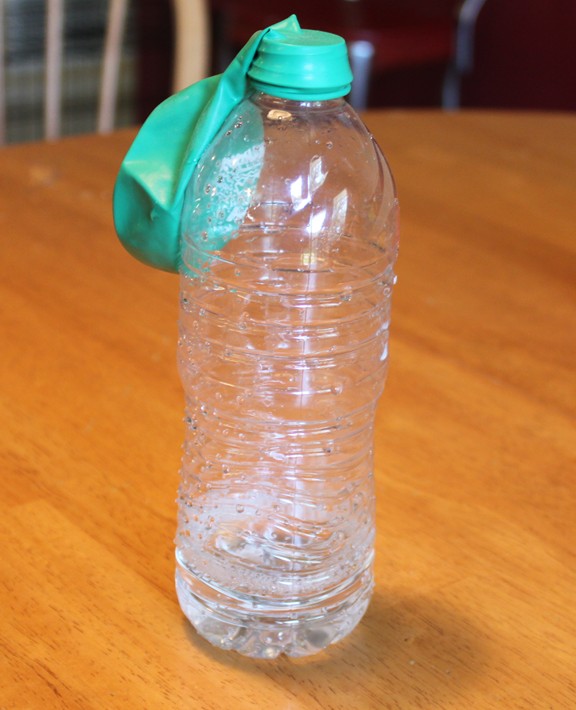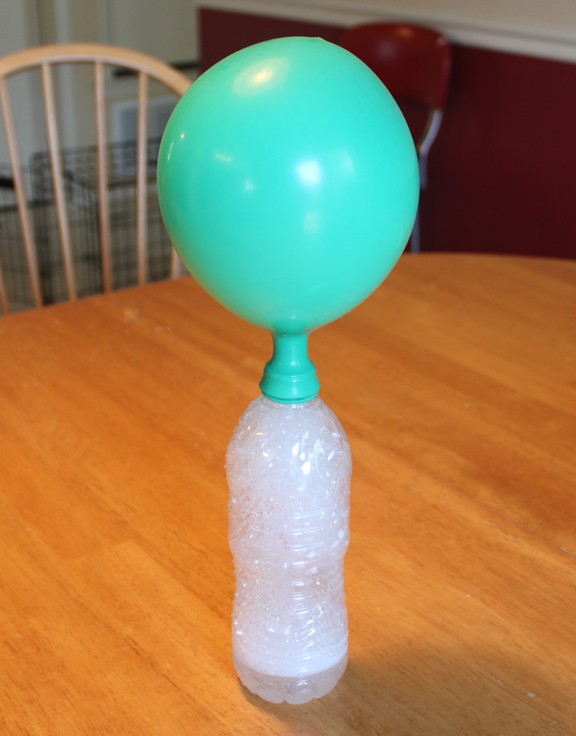We seem to be on a science kick this week! The reason is that Gresham’s science has corresponded with several activities that I did when I taught science (before my kids were born).
Here is a simple chemistry experiment that you can do with everyone’s favorite baking soda and vinegar reaction! Making a volcano is fun, but did you know that you can also use baking soda and vinegar to blow up a balloon?
We used this experiment to learn about gases. Gresham learned about solids and liquids earlier in the week, and we did a fun experiment with polymers – check that one out if you missed it!


Basically, mixing vinegar and baking soda is a simple acid + base reaction. For Gresham (age 5), I explained that the chemicals in the bottle rearranged themselves in the reaction, and they made carbon dioxide, which is the gas that filled up the balloon. For Aidan (age 8), I explained that there were actually three products of the reaction – water, carbon dioxide, and sodium acetate (a salt).
**Note: In order for the liquid in the bottom of the bottle to be only water, we would have to make sure that the amounts of baking soda and vinegar corresponded so that both were completely used up in the reaction. So there was probably some vinegar or baking soda left too – figuring out the amounts is over my head!
Here’s the chemical formula, if you’re interested:
acetic acid + sodium bicarbonate = carbon dioxide + water + sodium acetate
CH3COOH = NaHCO3 => H2O + NaOCOCH3 + CO2
Because the balloon is filled with CO2, it falls faster than a normal balloon because it is more dense than room air (which is mostly nitrogen with oxygen and carbon dioxide). We tied off the balloon from our reaction, and then compared it with a balloon that we blew up to the same size, and it was interesting to see the difference!

7 Comments
hamtee hollywood May 22, 2013
i did the same porject for my science fair
Yonniel Ricardo May 17, 2018
Hey nice comment
jay Sep 20, 2013
Good idea thanks so much
destiny hogan May 8, 2014
i did the same thing for tje science fair
Alyssa Jan 6, 2015
I'm going to do it for one of my projects
Abdul Wahab Sep 20, 2015
Well nice work.
I have tried this experiments with a large bottle and a large balloon. My kids and wife really enjoyed watching a large balloon blown by bottle.
Denise Jun 9, 2020
Thanks for the science projects! Can't wait to try them. Thank you so much for all of your ideas.
Robyn Forsyth Jul 3, 2020
How much vinegar is "some"? I will have3 grands older than 5 and I don't want to mess up the experiment
THANK YOU FOR YOUR IDEAS
Post a Comment